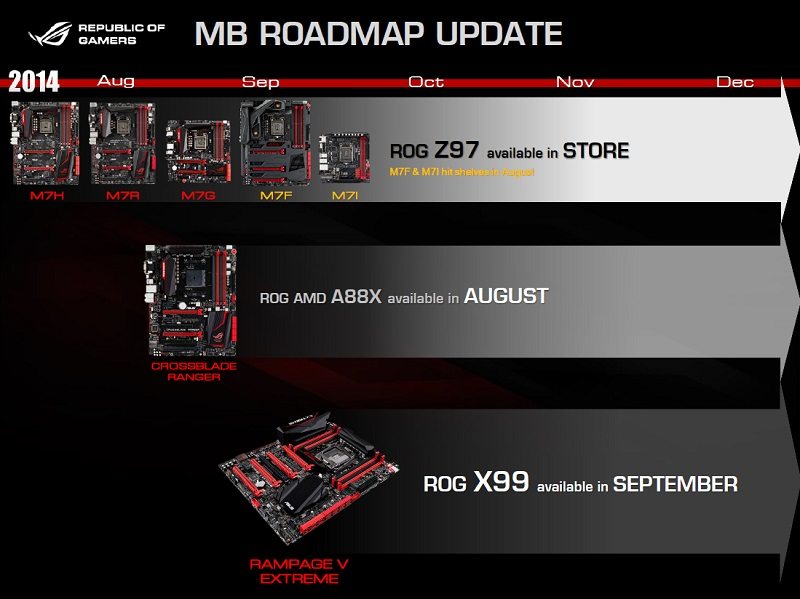ASUS X99 Motherboard Launch Coverage
The ASUS X99 ROG Series
So the ASUS ROG Roadmap shows the launch of two new products, the CrossBlade Ranger which supports the FM2+ A88X platform and the solitary ROG X99 motherboard the Rampage V Extreme. As you can see the roadmap does not mention a Maximus VII Extreme (M7E) so we will probably not see that, instead the ASUS Rampage V Extreme will continue the Extreme moniker.

As you might expect the ASUS flagship ROG motherboard is ram packed with features. The OC Panel makes a reappearance, that’s something we saw with the Maximus VI Extreme (Z87) motherboard. ASUS confirmed that the panel is identical to that model.
One of the important things to note about the X99 platform is that the PCI configuration is conflict. When we put aside the 40/28 PCIe 3.0 lanes available on the CPU it is important to know where the PCIe 2.0 lanes in the X99 chipset are allocated. The ASUS diagram below explains this. As you can see there are a fair number of contingencies: for example some PCIe 2.0 slots share bandwidth with USB and SATA Express ports.

Given the extreme overclocking pedigree of the Extreme ROG motherboards ASUS have implemented the X=-Socket II. This means it is easier to mount LN2 pots to the socket compared to the standard LGA 2011-3 socket. Of course, for most people this feature will never be used, but I guess it is novel.

The overclocking features continue with the Safe Boot mode. Effectively, Safe Boot allows you to do a clear CMOS reboot but while still retaining all your settings. It will simply boot in with the optimised defaults applied, but all your previous settings will be overlaid onto the BIOS already, just not applied.

The last innovation is the “Retry” button. This allows you to reboot after the system has hung and will not do a normal reset or shut down.

The ASUS DirectCU thermal design is better known on ASUS graphics cards but ASUS have implemented a similar technology for their new X99 ROG boards.

That DirectCU thermal design routes heat from the VRM to the large aluminium I/O cover where the ambient airflow of your case should carry the heat out.









